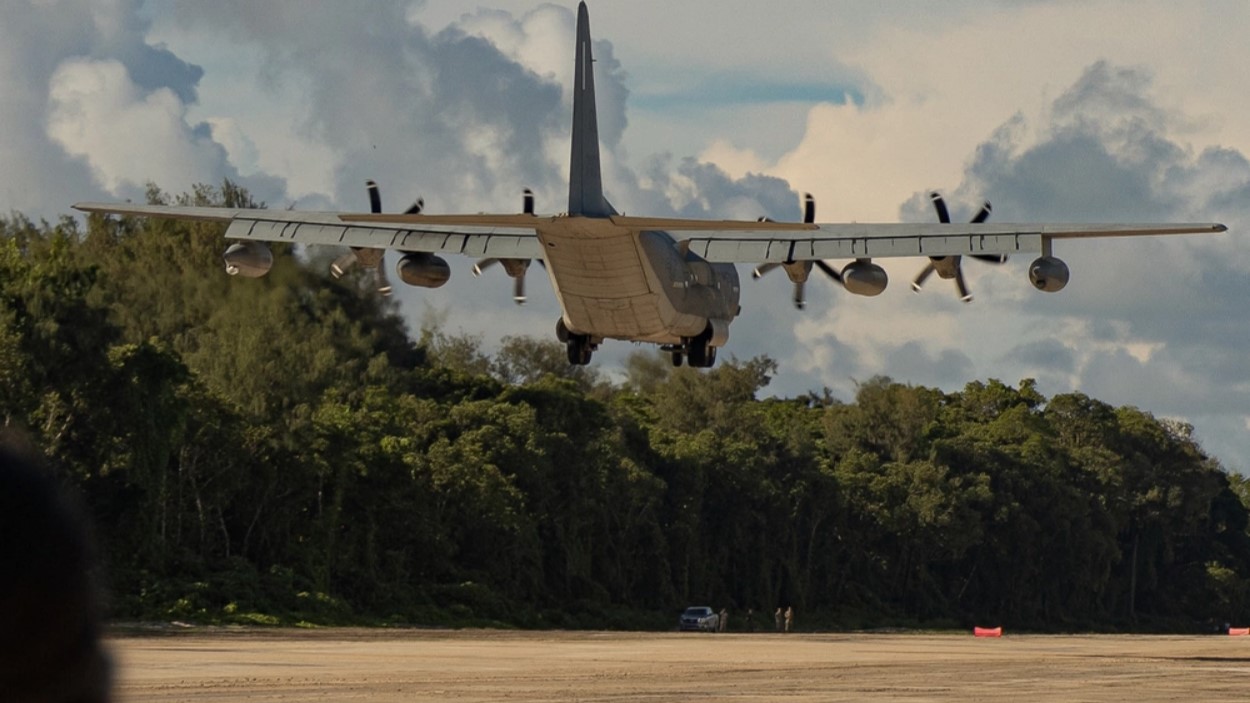Marines revive World War II airfield on Peleliu in the Pacific

In 1944, the small island of Peleliu was the scene of some of the fiercest fighting of World War II, as Marines and Army soldiers battled to capture an airfield carved into the coral cliffs. On Saturday, that legacy was revisited as Marines again flew from Peleliu, this time with an eye toward its importance in the modern Pacific war.
A Marine Corps KC-130J Super Hercules tanker assigned to the 1st Marine Air Wing landed on Peleliu on June 22, marking a major milestone in the U.S. Marine Corps’ ongoing effort to restore and modernize military facilities in the Pacific, many of which date back to World War II. The runway was officially recertified earlier this month.
The battle for Peleliu was one of the bloodiest in U.S. history, as nearly 50,000 Marines and Army soldiers wrested the small island from 10,000 Japanese soldiers. Nearly one in three Americans who landed on Peleliu were killed or wounded, the highest rate of any amphibious landing of the war, according to the Marines.
“Today is a historic moment as we land a Marine Corps aircraft on the Sledge runway,” said Maj. Christopher Romero, commander of Marine Corps Engineer Detachment Palau (MCED-P). “This remarkable achievement demonstrates the strategic importance of our mission and our commitment to regional stability and security.”
The name “Sledge” is a tribute to Eugene Sledge, a Marine who fought in the Battle of Peleliu and wrote about it in his book “With the Old Breed: At Peleliu and Okinawa,” one of the books that would provide material for “The Pacific.”
According to the Department of Defense, the newly certified runway, as well as other military improvements on the island, are “critical to strengthening the U.S. military’s strategic capabilities in the Indo-Pacific.” Peleliu is one of several locations in the Pacific where the U.S. military has increased or expanded its presence. This includes expanding the military presence on Guam, stationing newer aircraft in Japan and rehabilitating sites dating back to the early 20th century. More work is still needed on Peleliu before the project is complete, but the recertification of the runway is an important milestone in the site’s restoration.
Subscribe to Task & Purpose today. Get the latest military and culture news delivered daily to your inbox.
The decades-old airfield had essentially been reclaimed by nature. Workers had to remove large amounts of vegetation – and search the area for unexploded ordnance from the war, an ongoing problem in the Pacific – before work could begin on the actual runway. The work also included complementary projects, such as road improvements on the island.
The island, part of the state of Palau, is notoriously small. It is a coral reef island and barely more than 5 square miles in size. Nevertheless, its airstrip was considered a key step in the American island-hopping campaign of World War II, moving closer to the Japanese home islands (though some historians question the value of the small island and the high price paid for it, pointing out that the airfield never became a major air force outpost). The battle, which began on September 15, 1944, lasted three months and ended with an American victory on November 27. The III Amphibious Corps, composed of Marines from the 1st Marine Division and soldiers from the 81st Infantry Division, suffered at least 1,989 killed and more than 8,500 wounded. As part of the broader work on Peleliu, the Marine Corps is today expanding the Peleliu Civic Center Museum and adding pieces left over from the battle.



